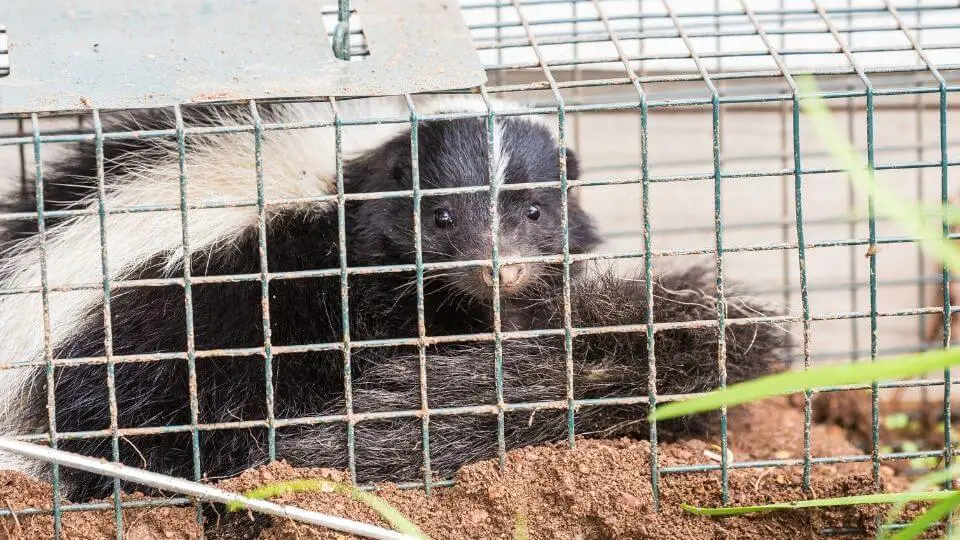Traps are an effective way to deal with a skunk, and can be baited with foods that have a strong odor to attract them. From the threat of rabies to their notorious spray, there are many good reasons to take out your trusty skunk trap and remove skunks from prowling around your property.
But, you may be wondering how to catch a skunk without getting sprayed?
Read on for expert tips on how to trap a skunk humanely, including what type of skunk bait to use, and how to relocate the skunk once it’s caught safely.
Table of Contents
Do skunk traps work?
Yes, they’re effective. With the proper skunk trap construction and design, trapped skunks won’t ever find a way to escape from their metallic home anytime soon.
And if you’re worried about size, there are plenty of skunk trap options that will accommodate skunks of all sizes. There are also traps available that make it easy to transport and relocate live skunks without them releasing their noxious spray.
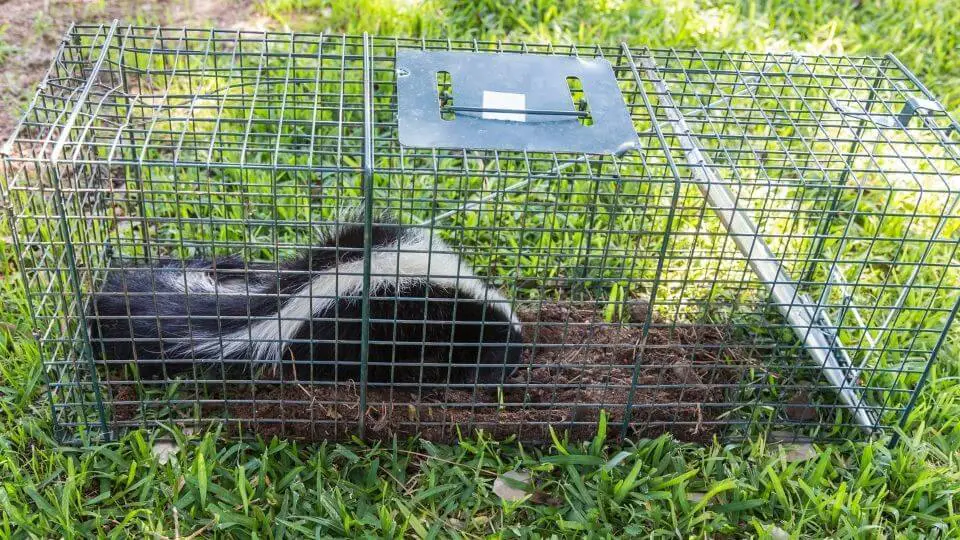
What is the best trap for a skunk humanely?
If you’re looking for the most humane skunk trap option, live traps are your best bet.
These skunk traps allow you to catch skunks and release them back into the wild without harming them.
Most traps utilize a special release mechanism that triggers when the skunk steps on it or moves the bait inside, effectively shutting them in. You can use this window of opportunity to quickly relocate the skunk a good distance away from your home.
Need a solution to your skunk infestation? Try a solid-steel spray-proof skunk trap that is both humane and effective. They feature a fully enclosed and circular design to prevent skunks from raising their tails and expelling their gas.
They’re also suitable for trapping opossums, raccoons, armadillos, chipmunks, and other small animals.
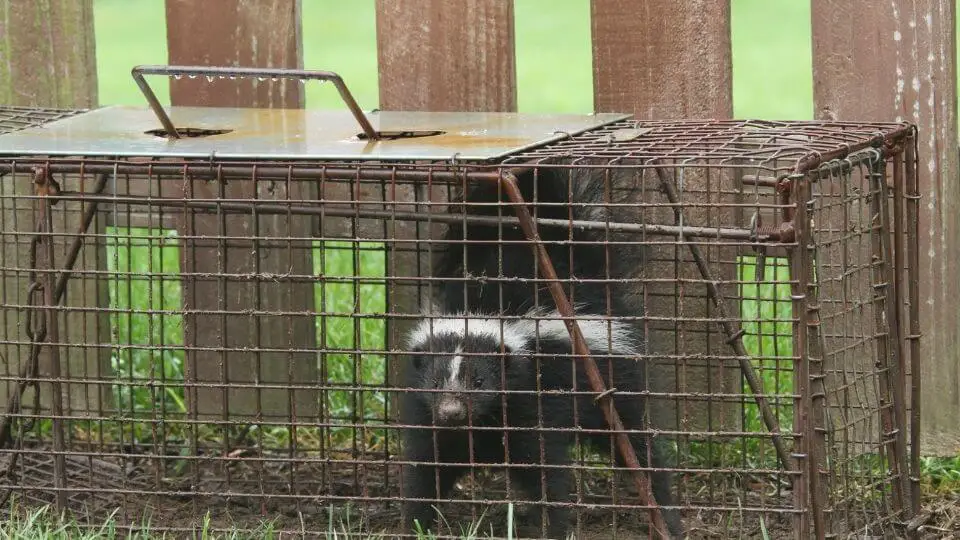
How do you make a homemade skunk trap?
If you don’t want to use a commercial trap or contact animal control, using a homemade trap is another viable option.
To make a skunk trap, you’ll need the following components:
- A PVC cylinder tube (cardboard or concrete tube works too)
- Bait
- Pin
- Some string
- Plywood
- 2x4x8′ (x2)
- 1/4″ Plywood: 9″x24″
- 3/4″ Plywood: 15″x26 1/2″
- Nail and Screw Eyes
- 1/4 pocket Hole Screw
You’ll need a tape measure, a skill saw, and a drill for the tools.
First, cut down the cylinder tube to about 3 to 4 feet with the skill saw. Adjust the size as needed.
Then, make a frame to be situated at the back of the tube using plywood. With a 2×4 piece, cut two pieces to about 15″ in length and another two pieces at about 12″. Attach these pieces using wood screws, placing pieces of the same length on opposite sides to form a square.
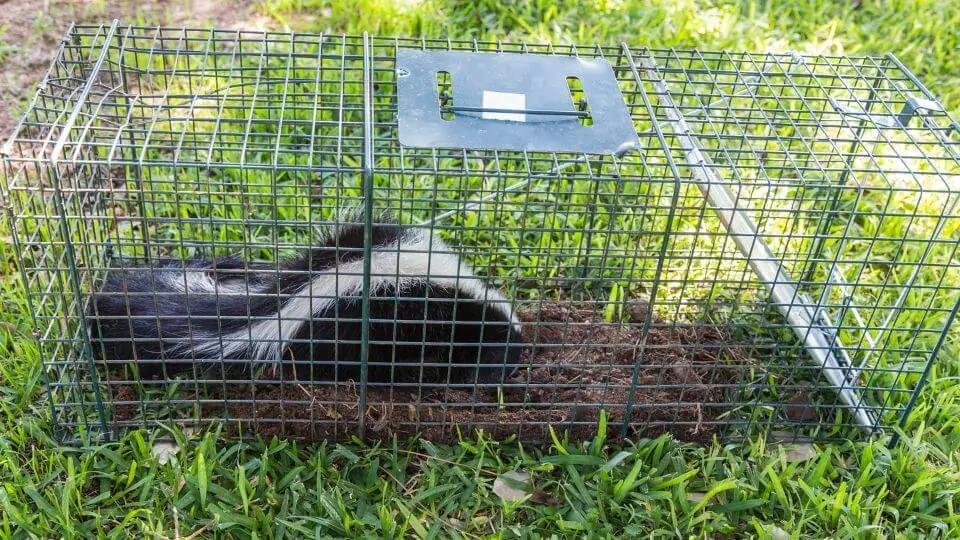
The entrance frame comes next. Take a 2×4 and cut it into five pieces: two 12″, two 24″, and one 15″. First, fasten the bottom 12″ board to the two 24″ sideboards. Then, attach the second 12″ at the center, sliding it about half an inch away from the center to form a gap before screwing. This serves as the door flap. Attach the 15″ at the top with the same gap distance as the center 12″.
Next, attach the back and front frame to either edge of the tube using pocket screws. The bottom of the entrance frame must be the 12″ wood, not the 15″ wood.
Before installing the front door, install some front-facing plywood as the forward frame. Cut down the 1/4″ plywood into two 2″x24″ pieces. Then attach them to either side of the door using pocket hole screws.
For the 3/4″ piece, cut it into an 11 1/2″ x 13 1/2″ piece, slightly shorter in width for the frame to open and close. This is the front door. About 1/2″ from the center bottom, drill a 1/4″ hole. Attach the screw eye to the door’s top center. This is where your string will come into play.
Slide the door behind the forward frame and ensure that it slides up and down smoothly. Cut it shorter if it’s too big, or make more space by adjusting the forward frame. Attach another screw eye on the top center of the forward frame.

With both screw eyes, feed the string to the door first, then to the top of the frame. This string will be used to open the trap door and release the skunk.
We’re almost done! Cover the back end of the skunk trap by cutting the 1/4″ plywood to a 15″ x 15″ to prevent skunks from backing out.
Then, make the inner floor where you’ll put the bait. Using your final 1/4″ plywood, cut it into one piece of 5″ x 24″. From the plywood’s back center, drill a 1/2″ hole using a 1/4″ drill. With this hole, feed the string, then tie it.
Approximately 5″ from the back of the trap, drill a 1/4″ hole on the concrete top. The 5″ x 24″ should still be inside and with the string, bring it up through the hole on top.
With the door raised, insert the pin inside the bottom hole by the entrance to leave it open. Lift one side of the inner plywood by pulling on the string, effectively making a sensitive ramp. Tie the string to the pin and leave the door open.
Once pressure is applied to the 5″x24″, the door will close and trap the skunk. To release it, pull on the string to remove the pin, and the captured animal will be able to exit the cage trap.
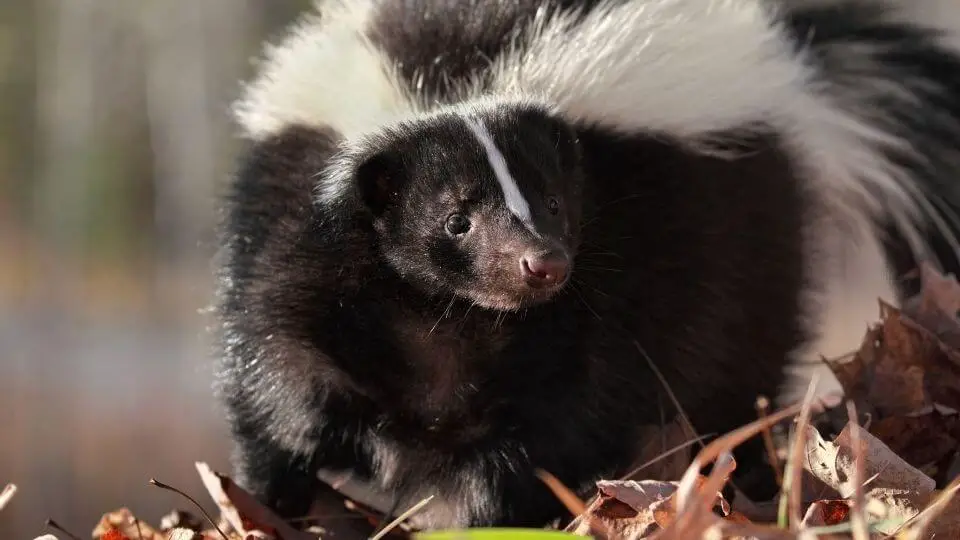
What attracts skunks to traps?
Skunks are omnivorous animals, so they’re attracted to a variety of baits, namely:
- Insects and grubs
- Cat food
- Fruits and vegetables
- Mice, rats, and rodents
- Beetles
- Marshmallows and peanut butter
- Chicks and chicken eggs
- Worms
- Seeds and leaves
- Cooked grains
The best bait for a skunk is usually foods with a strong odor. Bread, honey, and peanut butter are also good baits for skunks.
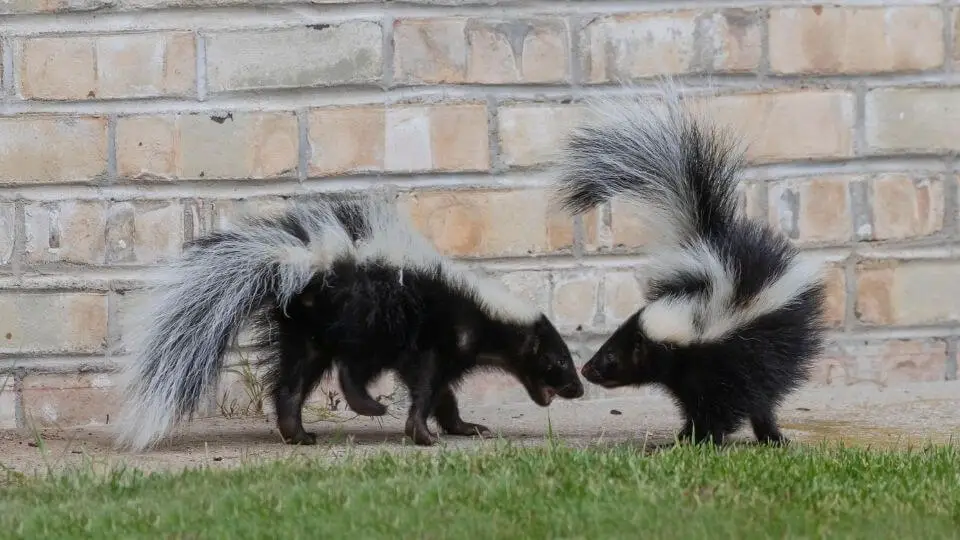
Will skunks spray when trapped?
Skunks spray as a last resort defense mechanism. When they feel scared or threatened, they will lift their tail and spray a noxious, musky liquid from their scent glands.
However, if the trap is appropriately designed and the skunk feels safe inside, it shouldn’t feel the need to spray. Additionally, if the trap is enclosed and the skunk can’t see anything from the inside, they’re less likely to feel scared or threatened to spray.
The only time it may spray is during release. To avoid that risk, release the skunk from a distance, preferably without the front door facing you or any other threat.
How far should you relocate a skunk?
A skunk’s typical habitat is within 2 miles of its den. If you don’t want the skunk to come back, you’ll need to relocate it at least that far to ensure it doesn’t come back.
However, keep in mind that skunk spray can travel from far away, up to 20 miles if the wind conditions are unfavorable.
Also, remember that some states like California forbid the relocation of game and fish. Contact a pest control or wildlife control specialist if you don’t want to risk engaging in illegal activities.

Will a skunk find its way back?
The farther away it is from your residence, the harder it’ll be to find its way back. Beyond 4 miles, it’s unlikely the skunk will ever trouble you again.
Remember that skunks may not survive after being relocated due to a shortage of food and shelter.
If you don’t want to harm these critters, don’t relocate them too far from their original habitat. Instead, find a happy medium that still somewhat resembles its habitat nearby, and where the skunk will likely have more luck finding food and shelter.
To prevent future visits, secure your place with a 2-foot deep skunk-proof fence and tightly seal your trash bags.

